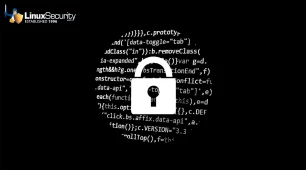-----BEGIN PGP SIGNED MESSAGE-----
Hash: SHA1
______________________________________________________________________________
SUSE Security Announcement
Package: mysql
Announcement ID: SUSE-SA:2006:036
Date: Fri, 23 Jun 2006 10:00:00 +0000
Affected Products: SUSE LINUX 10.1
SUSE LINUX 10.0
SUSE LINUX 9.3
SUSE LINUX 9.2
SUSE LINUX 9.1
SuSE Linux Enterprise Server 8
SUSE SLES 9
UnitedLinux 1.0
Vulnerability Type: remote code execution
Severity (1-10): 6
SUSE Default Package: no
Cross-References: CVE-2006-1516, CVE-2006-1517, CVE-2006-1518
Content of This Advisory:
1) Security Vulnerability Resolved:
MySQL security problems
Problem Description
2) Solution or Work-Around
3) Special Instructions and Notes
4) Package Location and Checksums
5) Pending Vulnerabilities, Solutions, and Work-Arounds:
See SUSE Security Summary Report.
6) Authenticity Verification and Additional Information
______________________________________________________________________________
1) Problem Description and Brief Discussion
The database server MySQL was updated to fix the following security problems:
- Attackers could read portions of memory by using a user name with
trailing null byte or via COM_TABLE_DUMP command (CVE-2006-1516,
CVE-2006-1517).
- Attackers could potentially execute arbitrary code by causing a
buffer overflow via specially crafted COM_TABLE_DUMP packets
(CVE-2006-1518).
The mysql server package was released on May 30th already, the
mysql-Max server package was released on June 20th after additional
bugfixes.
2) Solution or Work-Around
There is no known workaround, please install the update packages.
3) Special Instructions and Notes
Please close and restart all running instances of mysql after the update.
4) Package Location and Checksums
The preferred method for installing security updates is to use the YaST
Online Update (YOU) tool. YOU detects which updates are required and
automatically performs the necessary steps to verify and install them.
Alternatively, download the update packages for your distribution manually
and verify their integrity by the methods listed in Section 6 of this
announcement. Then install the packages using the command
rpm -Fhv
to apply the update, replacing with the filename of the
downloaded RPM package.
x86 Platform:
SUSE LINUX 10.1:
4dea85f3d52c94e09c469a79ab43fb5f
SUSE LINUX 10.0:
e0e8621cff3ed97a28b92c684c5a7a22
SUSE LINUX 9.3:
03f598b001d1e845f21dce3757aa8a86
26f4d0a0eeb71ebf33086086f1fe7a7d
SUSE LINUX 9.2:
d08f0a3f00b0b57691059e16808c334c
e020aff4f0e75e8874bc589491431adf
SUSE LINUX 9.1:
c2fe788b964bda22174cee23305dd07d
f2d7e97ddcb8ad1bb71e3d3479be3a94
Power PC Platform:
SUSE LINUX 10.1:
651e55aa7f5715119a80efb15c443f48
SUSE LINUX 10.0:
9e45efa2a53c95b0b2ea903418ccc350
ppc64:
SUSE LINUX 10.1:
9dbfffd1a00b63816439a5440ef38154
SUSE LINUX 10.0:
566e0653cd74d4609720a03572187e5f
x86-64 Platform:
SUSE LINUX 10.1:
280e5e41997395e3894e859830e347d1
SUSE LINUX 10.0:
f2944ca6b8392b9f04d81f7f6e033c72
SUSE LINUX 9.3:
b5f4630b84df39f66d5fd443c2ed8640
c984aa6fb16d2c076e64ef0b5917fa82
SUSE LINUX 9.2:
7edf1de7cd015427b0dcbb2bdaafd5f9
e88d59f618e9388579ddaac2ee508430
SUSE LINUX 9.1:
5f07e550385e013b90f4005d12fb8ce3
6ba91ee838f6efe043e0528fdccaa578
Sources:
SUSE LINUX 10.1:
a85b8ce37f01354b92799ca81cf81d95
SUSE LINUX 10.0:
e17a91c00b19f8f27e6a77f49fa7f4ac
SUSE LINUX 9.3:
b937478aa654975cd947a825792b80c4
SUSE LINUX 9.2:
08471d066667237b395868a8c5e3e142
SUSE LINUX 9.1:
3ab5d53a677970e2d10cdb1609a015c8
646b4af4383f96b858ebd605f3aa6778
Our maintenance customers are notified individually. The packages are
offered for installation from the maintenance web:
UnitedLinux 1.0
SUSE SLES 9
SuSE Linux Enterprise Server 8
______________________________________________________________________________
5) Pending Vulnerabilities, Solutions, and Work-Arounds:
See SUSE Security Summary Report.
______________________________________________________________________________
6) Authenticity Verification and Additional Information
- Announcement authenticity verification:
SUSE security announcements are published via mailing lists and on Web
sites. The authenticity and integrity of a SUSE security announcement is
guaranteed by a cryptographic signature in each announcement. All SUSE
security announcements are published with a valid signature.
To verify the signature of the announcement, save it as text into a file
and run the command
gpg --verify
replacing with the name of the file where you saved the
announcement. The output for a valid signature looks like:
gpg: Signature made using RSA key ID 3D25D3D9
gpg: Good signature from "SuSE Security Team "
where is replaced by the date the document was signed.
If the security team's key is not contained in your key ring, you can
import it from the first installation CD. To import the key, use the
command
gpg --import gpg-pubkey-3d25d3d9-36e12d04.asc
- Package authenticity verification:
SUSE update packages are available on many mirror FTP servers all over the
world. While this service is considered valuable and important to the free
and open source software community, the authenticity and the integrity of
a package needs to be verified to ensure that it has not been tampered
with.
There are two verification methods that can be used independently from
each other to prove the authenticity of a downloaded file or RPM package:
1) Using the internal gpg signatures of the rpm package
2) MD5 checksums as provided in this announcement
1) The internal rpm package signatures provide an easy way to verify the
authenticity of an RPM package. Use the command
rpm -v --checksig
to verify the signature of the package, replacing with the
filename of the RPM package downloaded. The package is unmodified if it
contains a valid signature from build@suse.de with the key ID 9C800ACA.
This key is automatically imported into the RPM database (on
RPMv4-based distributions) and the gpg key ring of 'root' during
installation. You can also find it on the first installation CD and at
the end of this announcement.
2) If you need an alternative means of verification, use the md5sum
command to verify the authenticity of the packages. Execute the command
md5sum
after you downloaded the file from a SUSE FTP server or its mirrors.
Then compare the resulting md5sum with the one that is listed in the
SUSE security announcement. Because the announcement containing the
checksums is cryptographically signed (by security@suse.de), the
checksums show proof of the authenticity of the package if the
signature of the announcement is valid. Note that the md5 sums
published in the SUSE Security Announcements are valid for the
respective packages only. Newer versions of these packages cannot be
verified.
- SUSE runs two security mailing lists to which any interested party may
subscribe:
suse-security@suse.com
- General Linux and SUSE security discussion.
All SUSE security announcements are sent to this list.
To subscribe, send an e-mail to
.
suse-security-announce@suse.com
- SUSE's announce-only mailing list.
Only SUSE's security announcements are sent to this list.
To subscribe, send an e-mail to
.
For general information or the frequently asked questions (FAQ),
send mail to or
.
==================================================================== SUSE's security contact is or .
The public key is listed below.
====================================================================





















